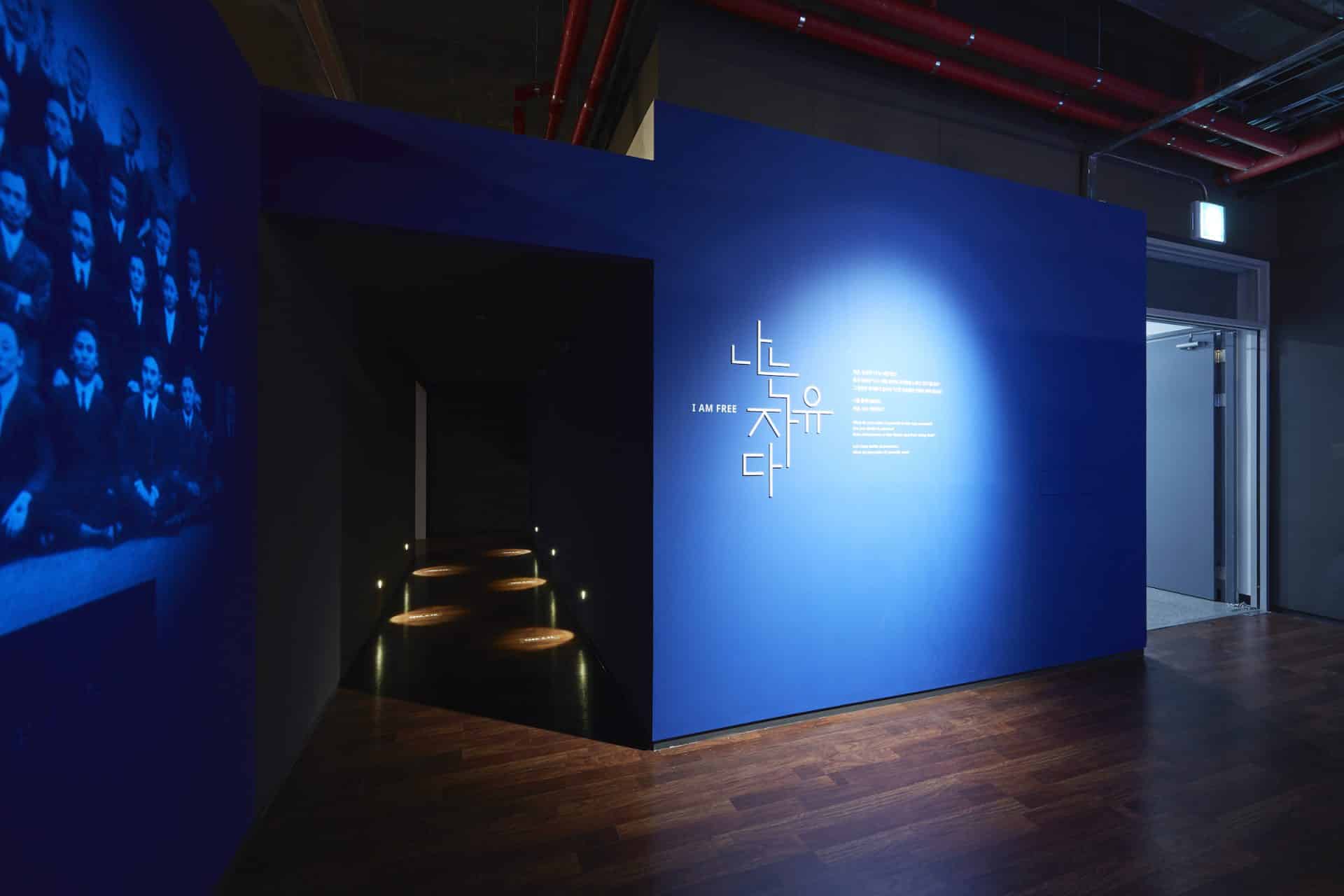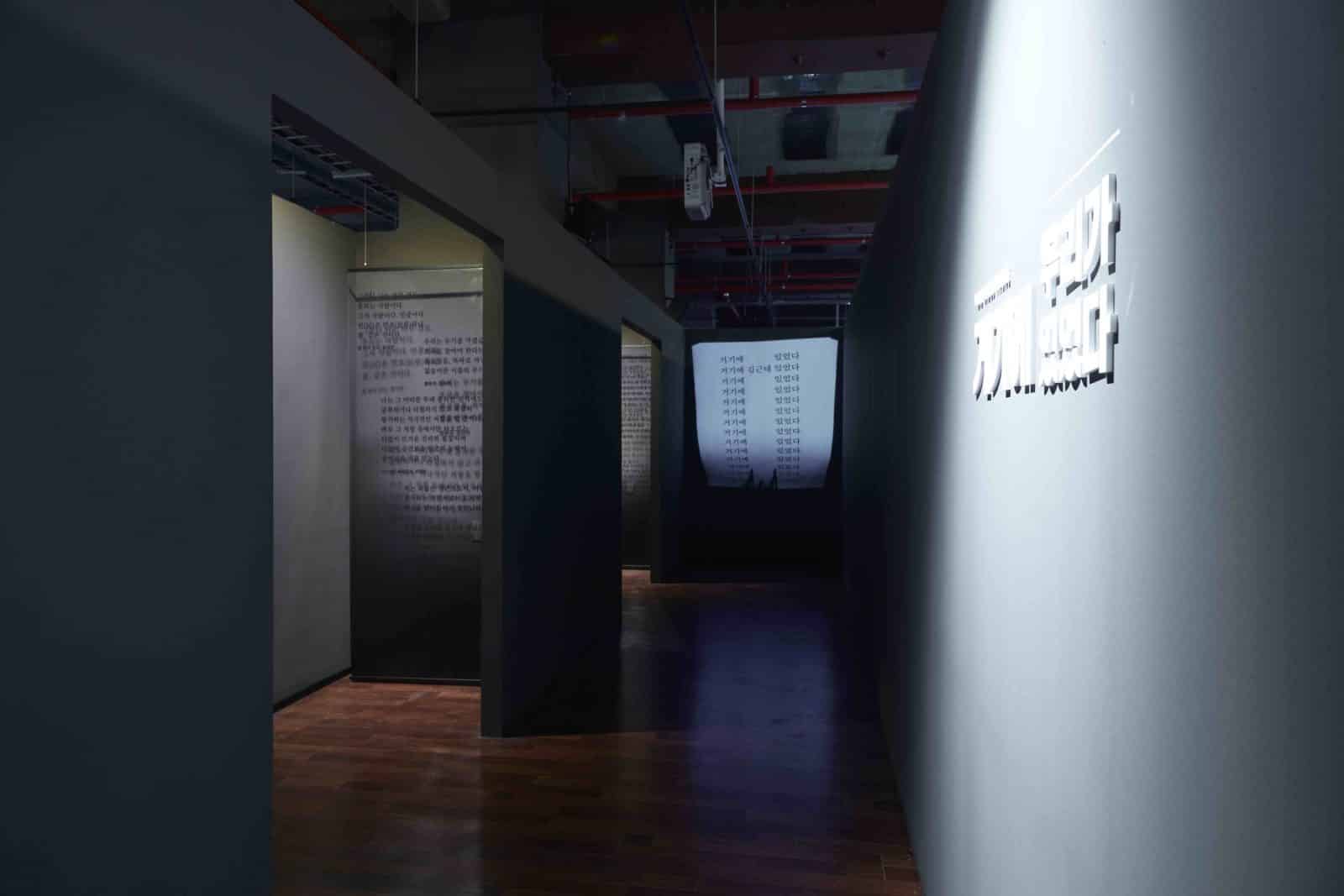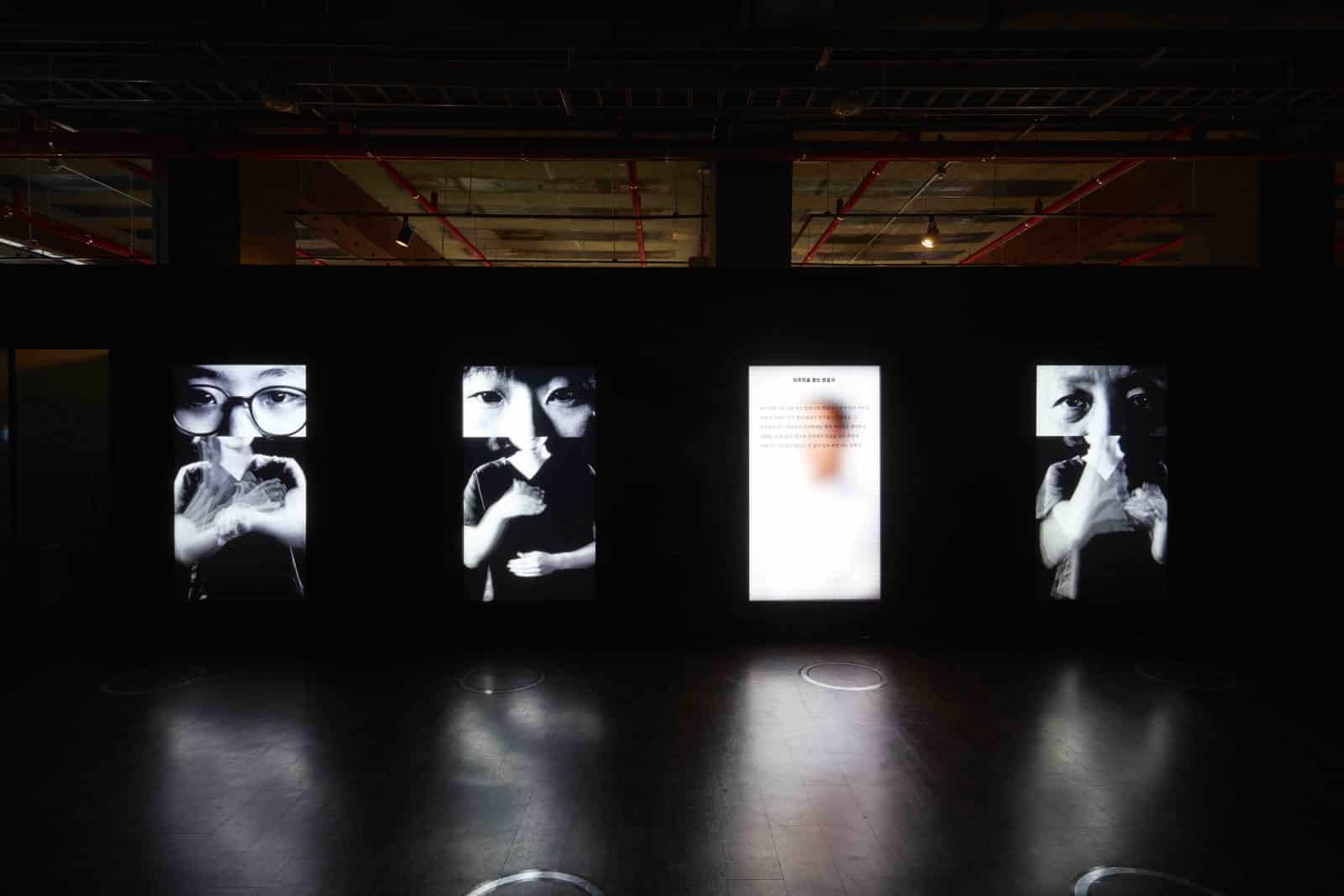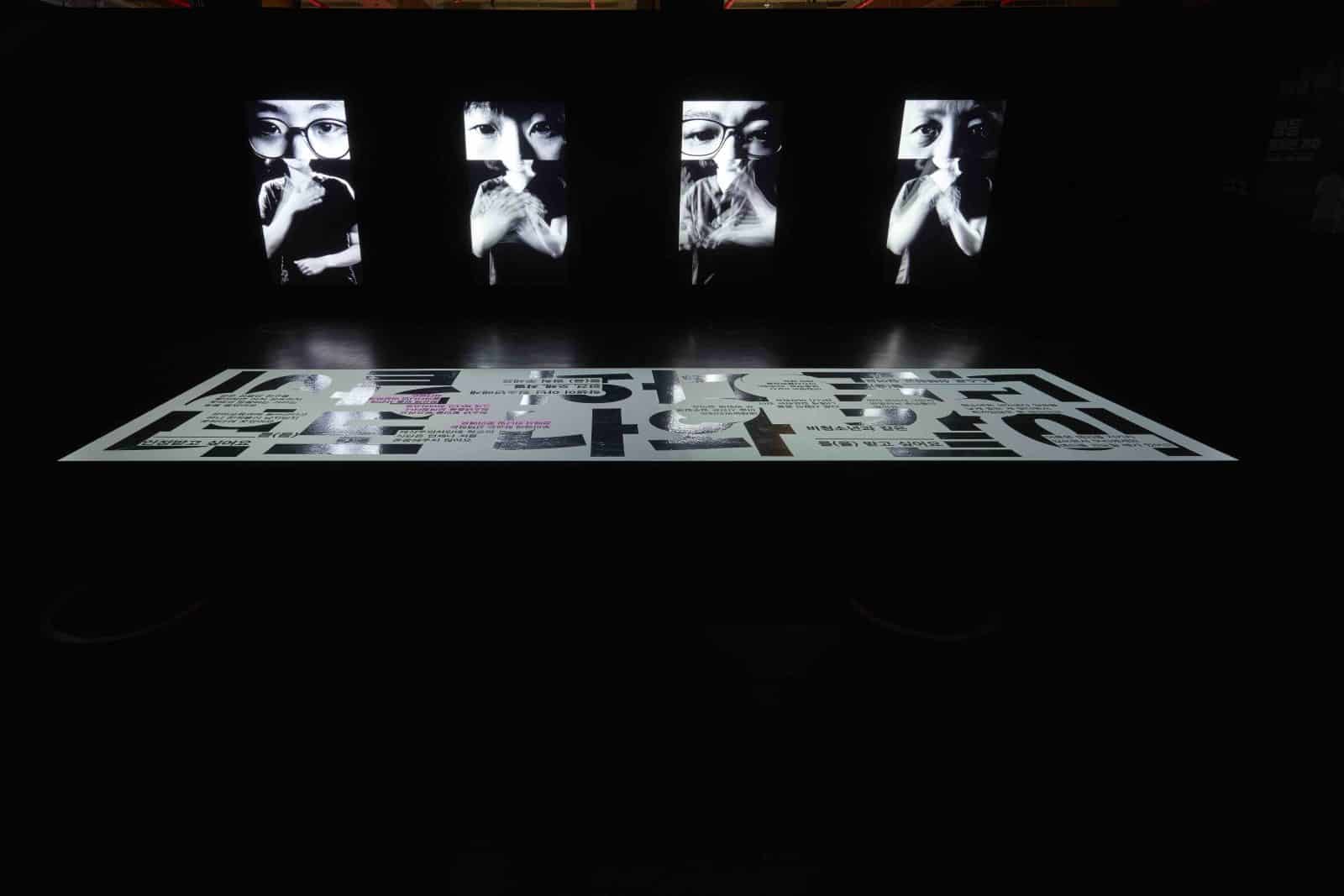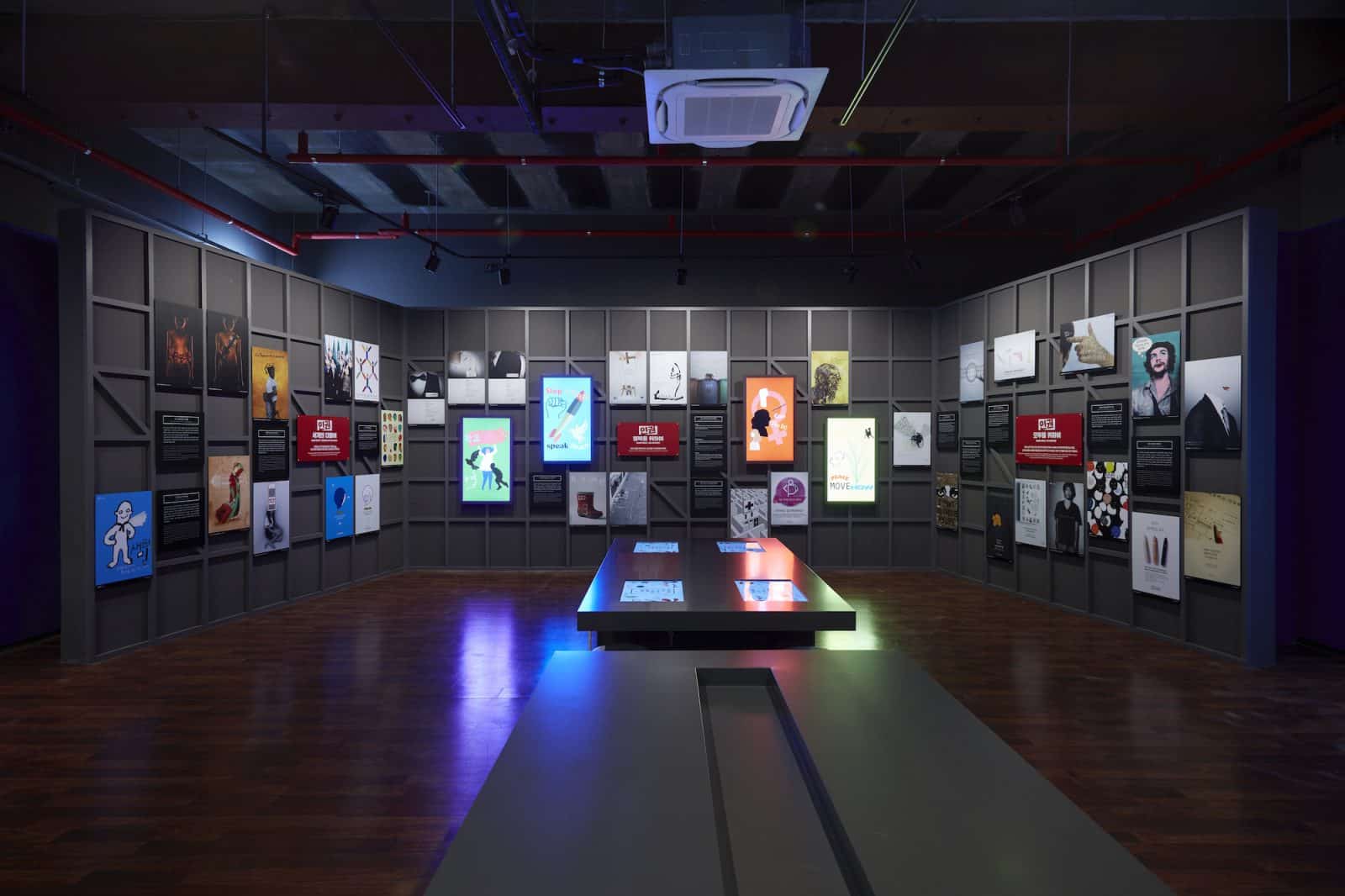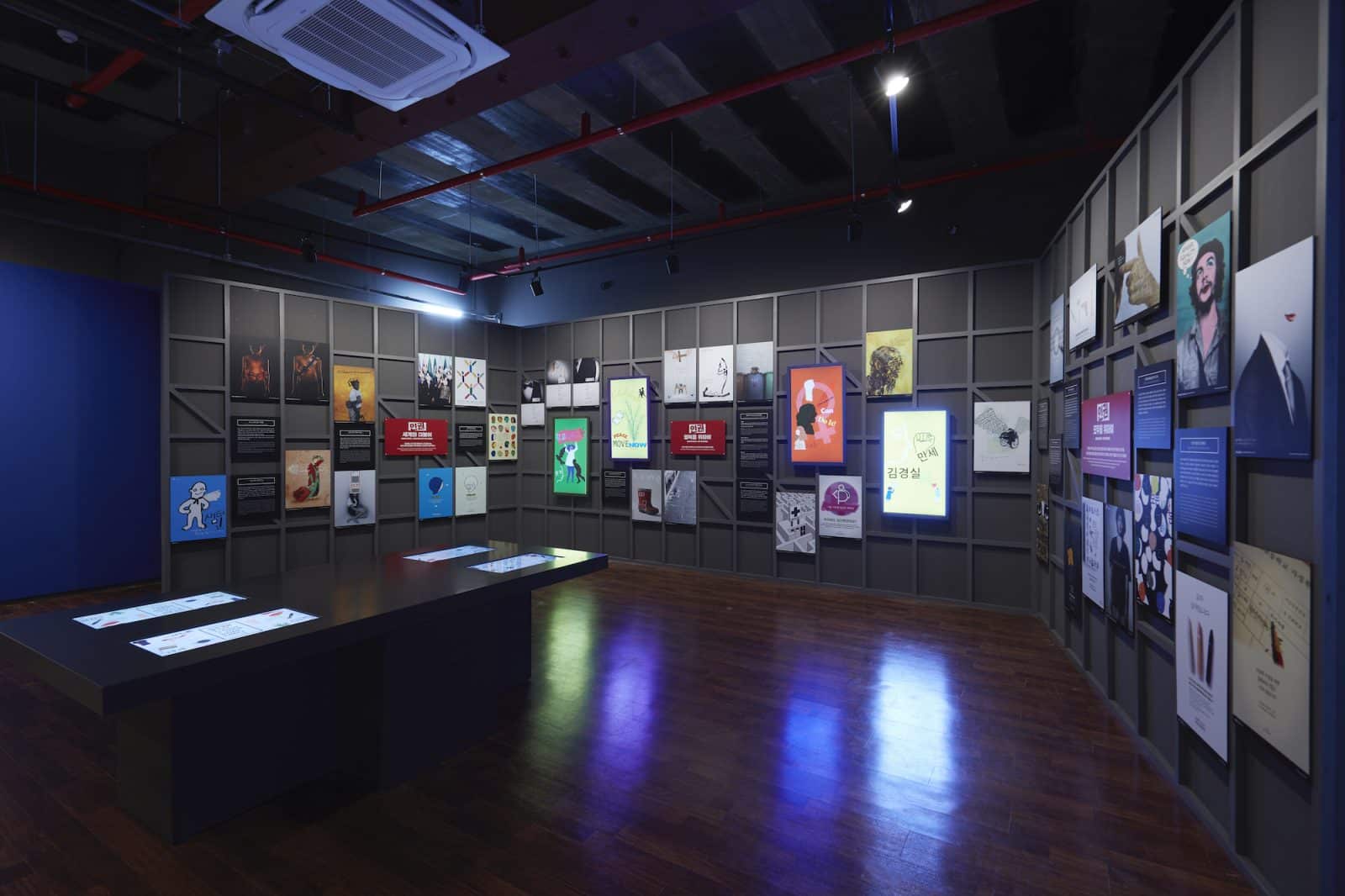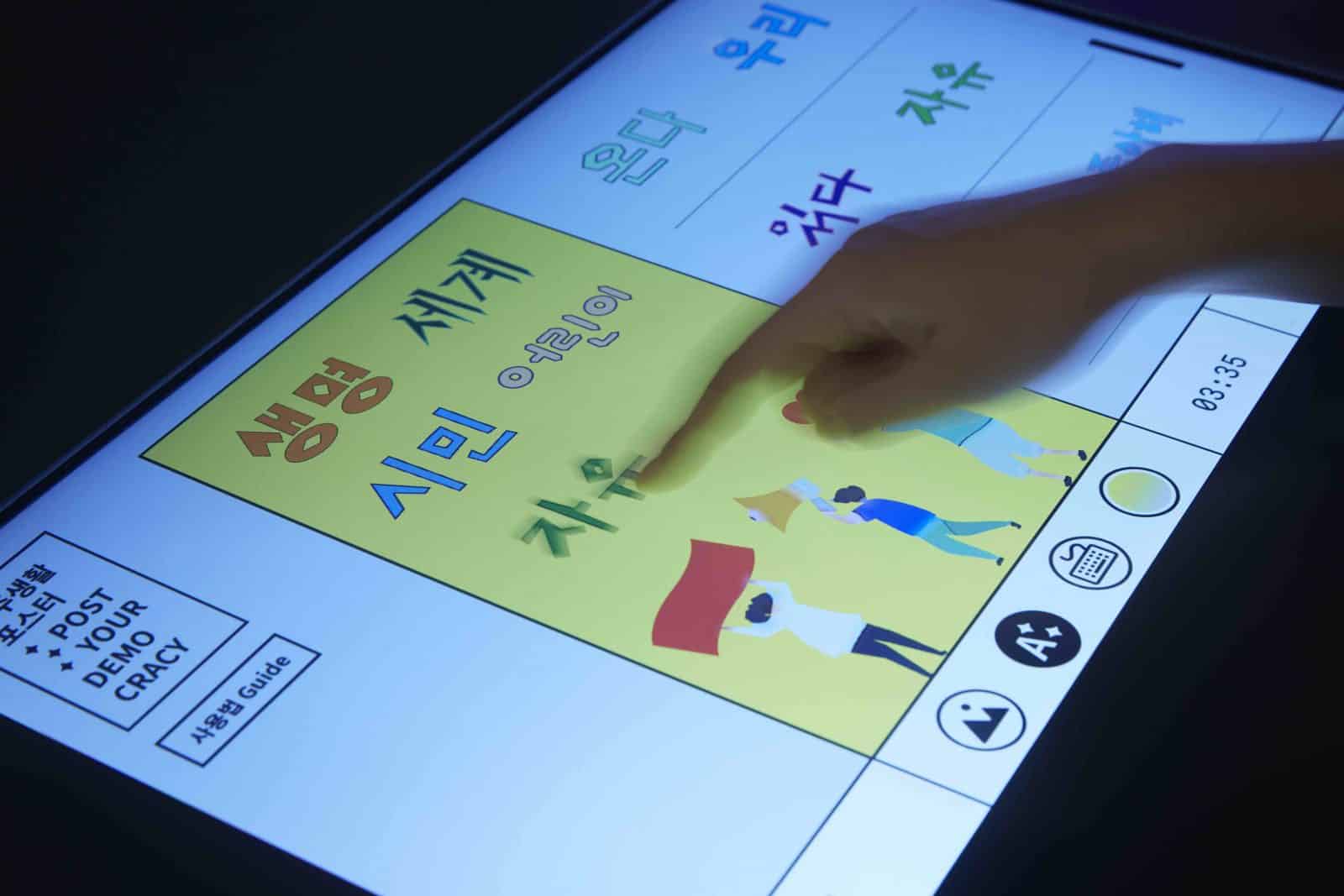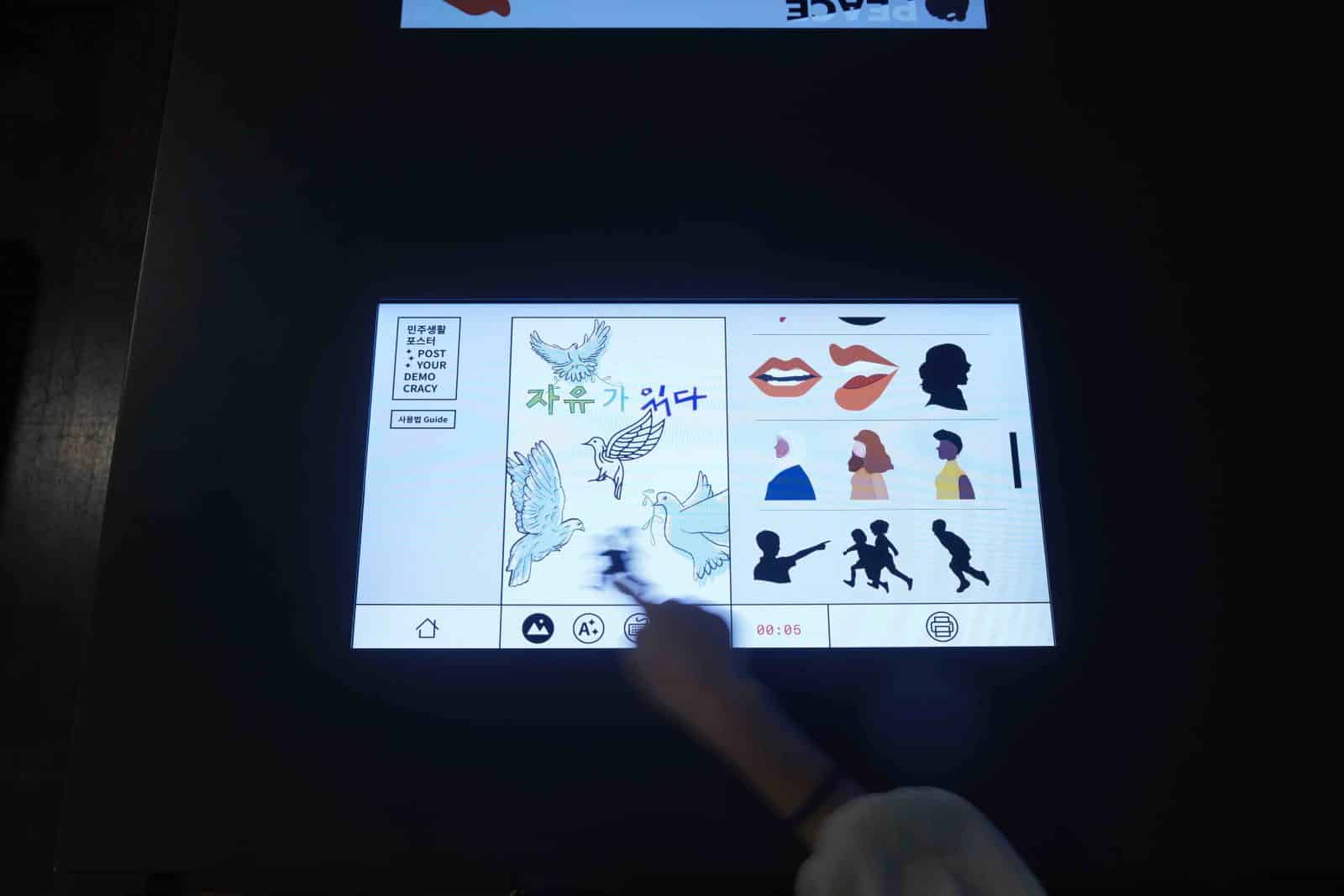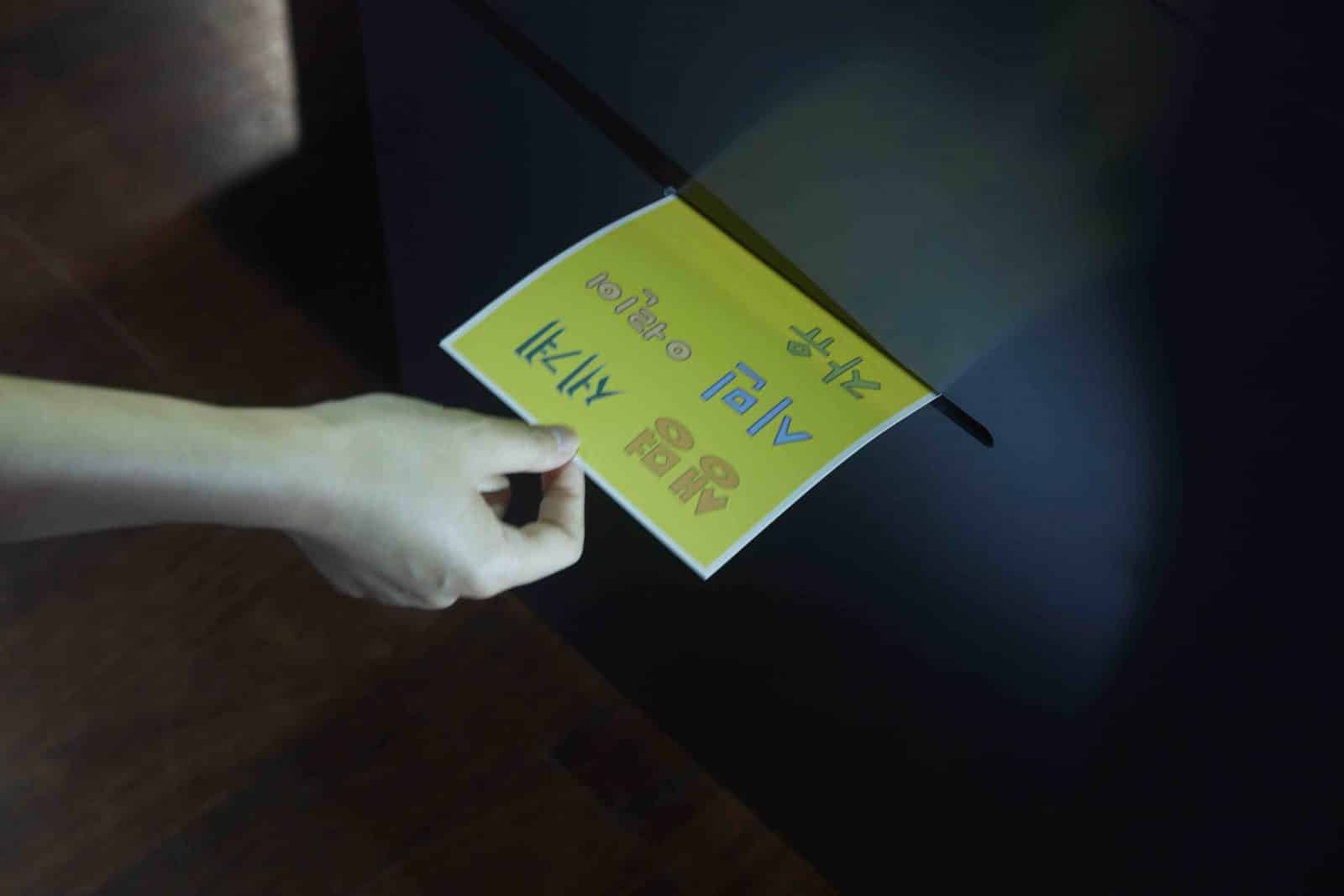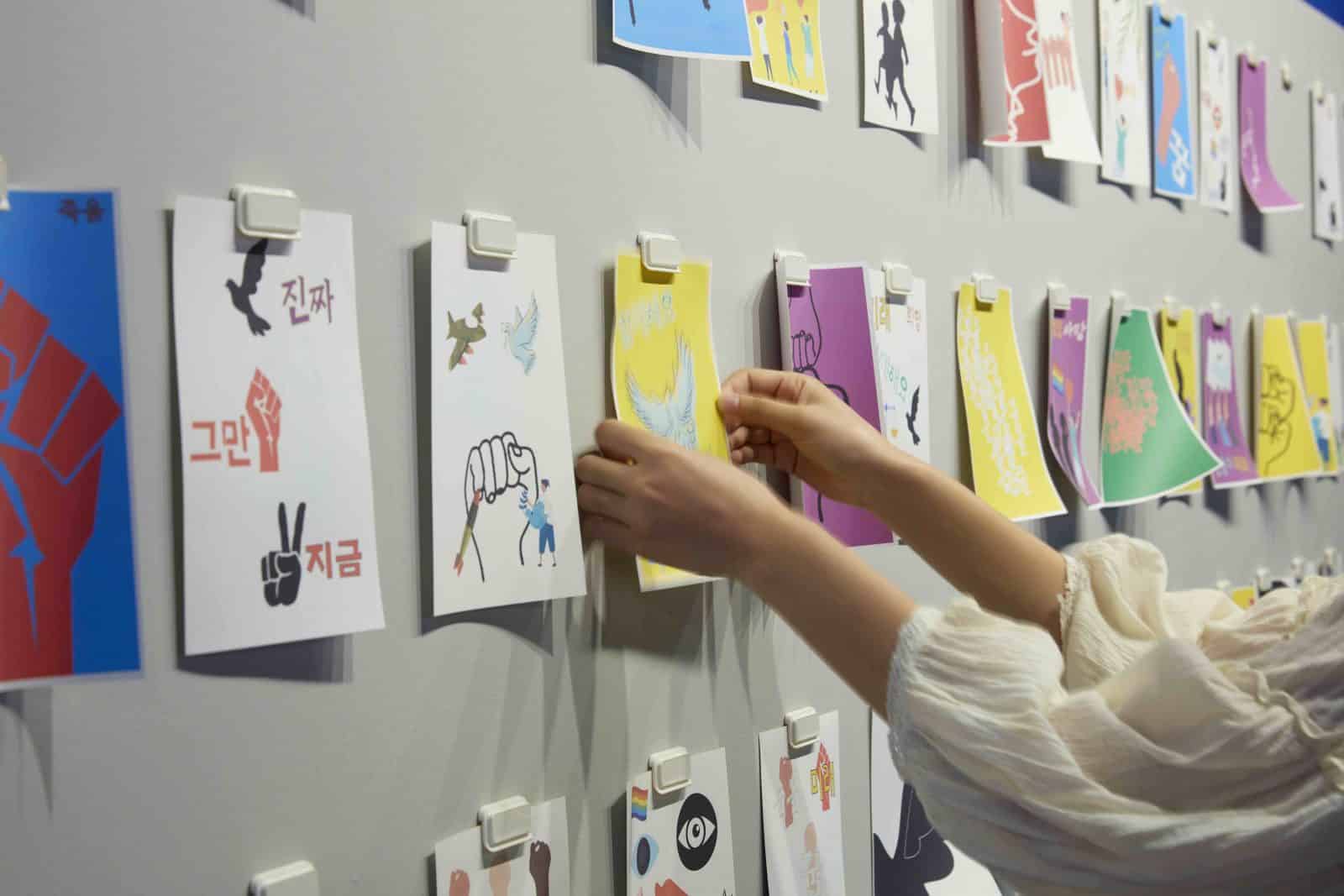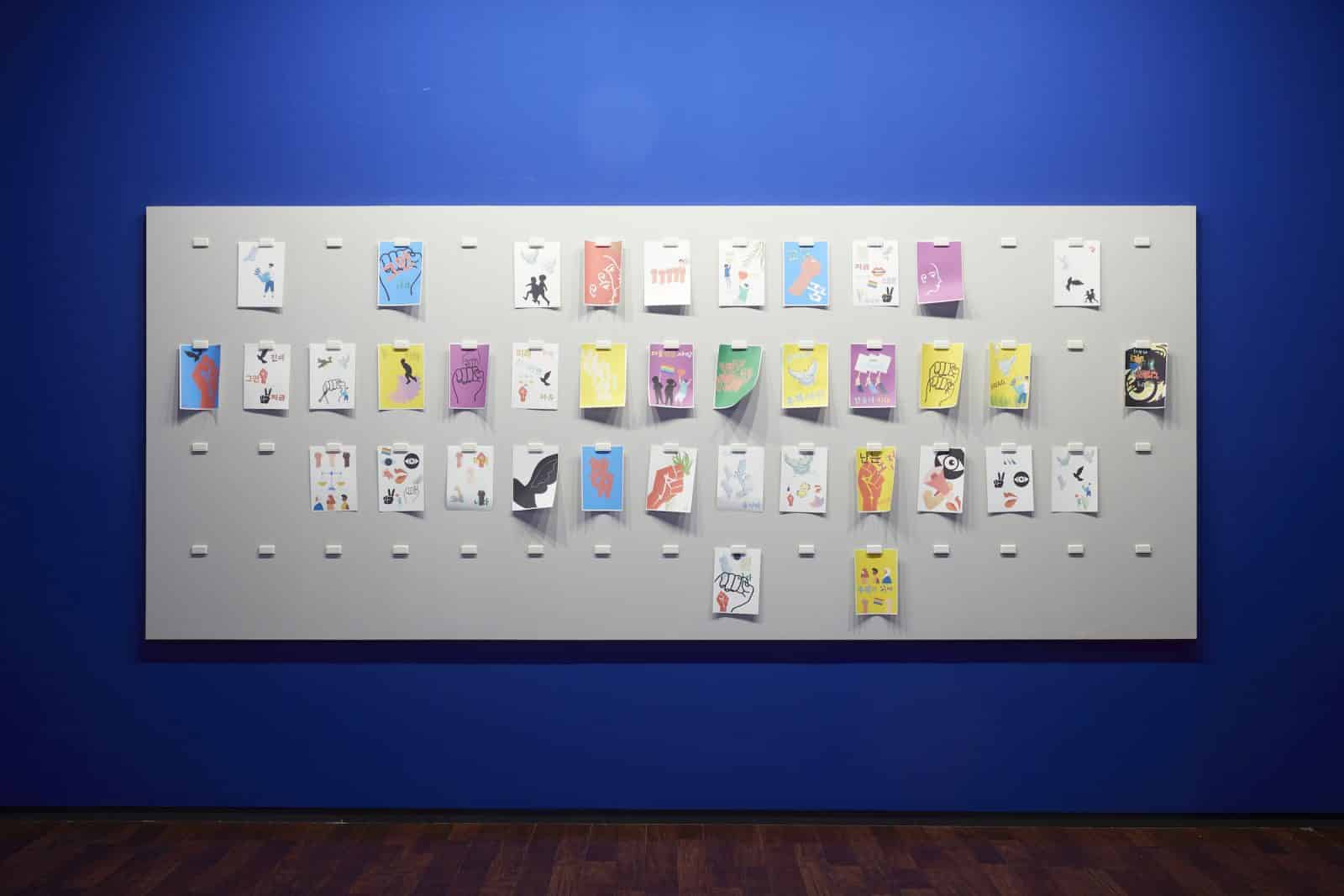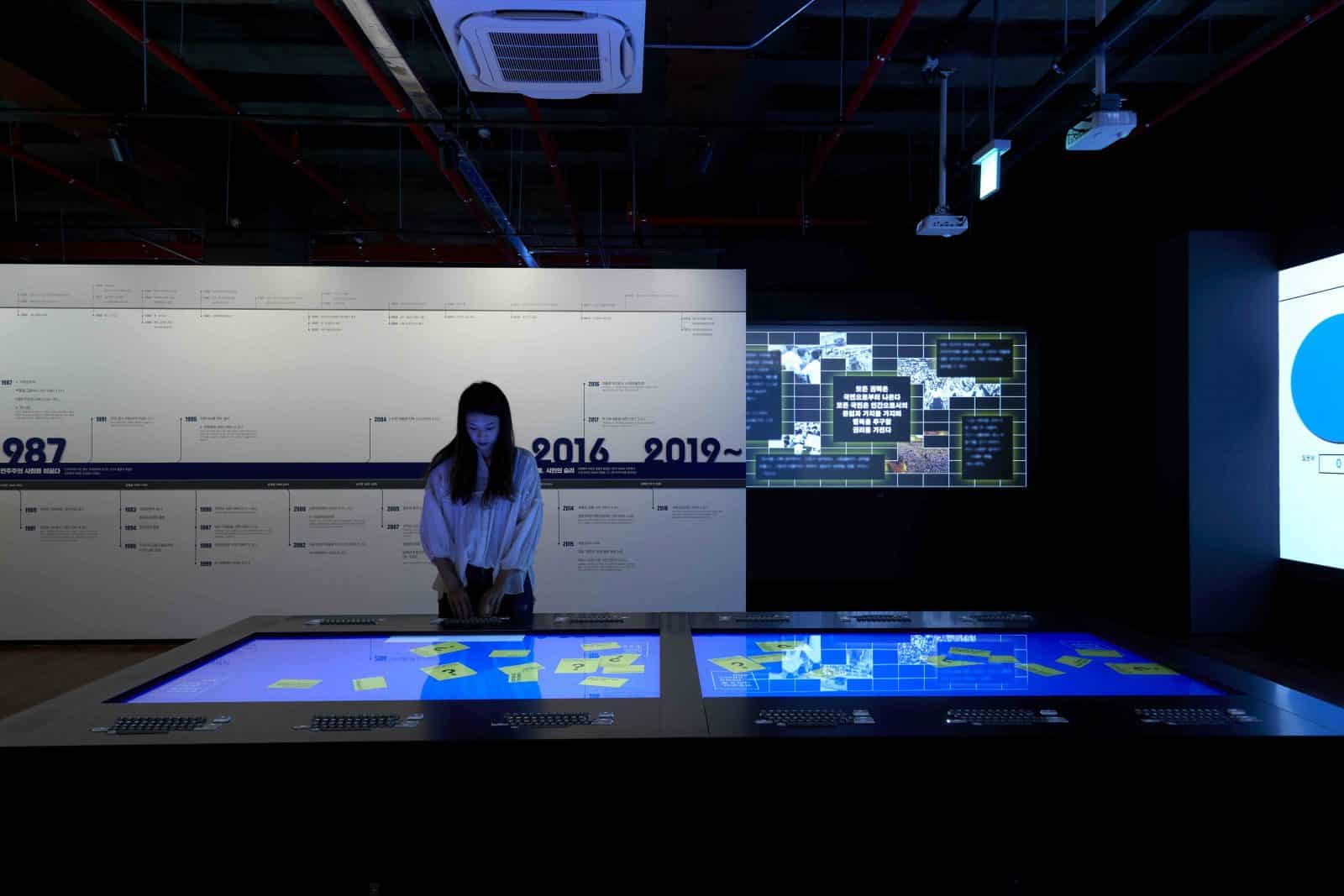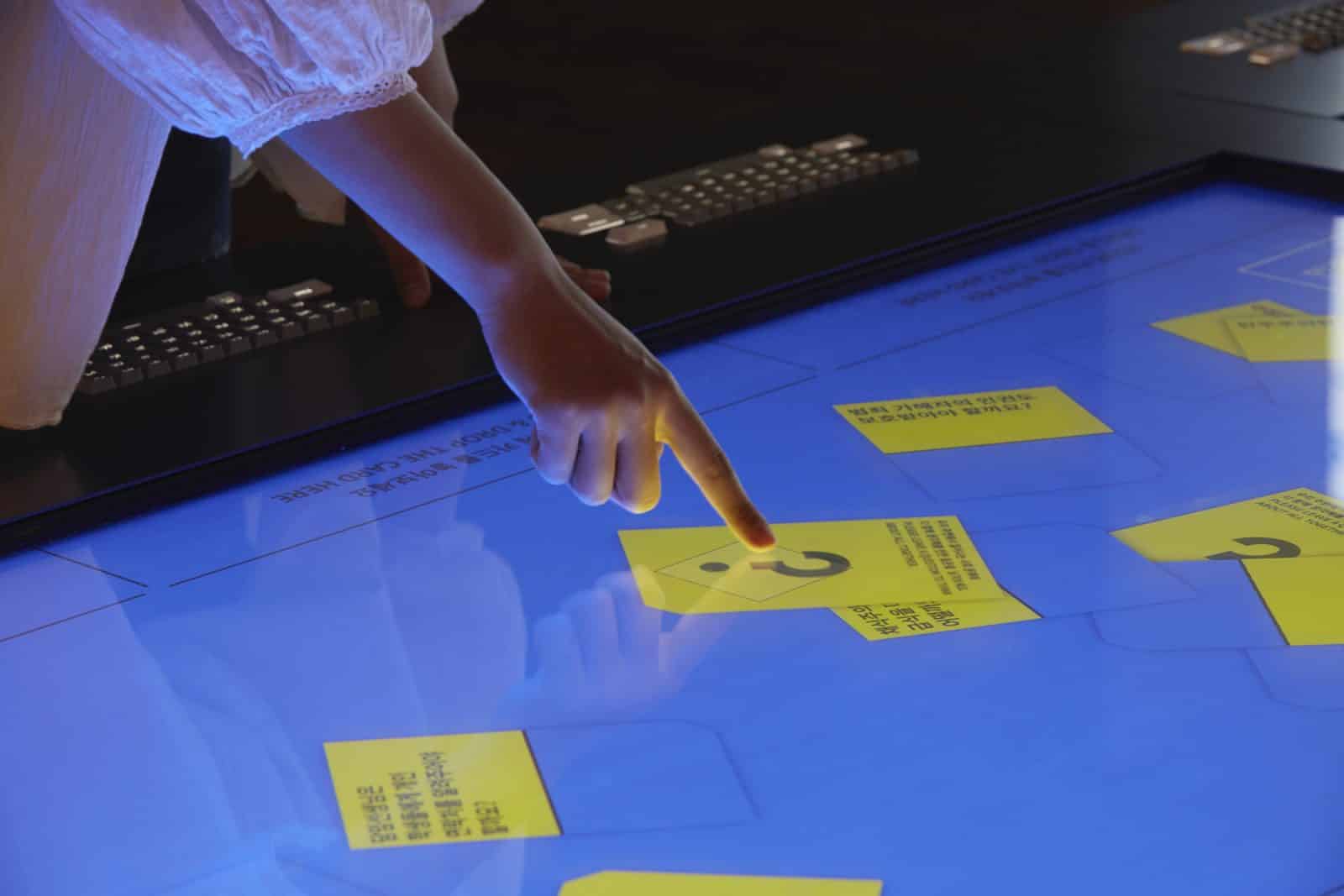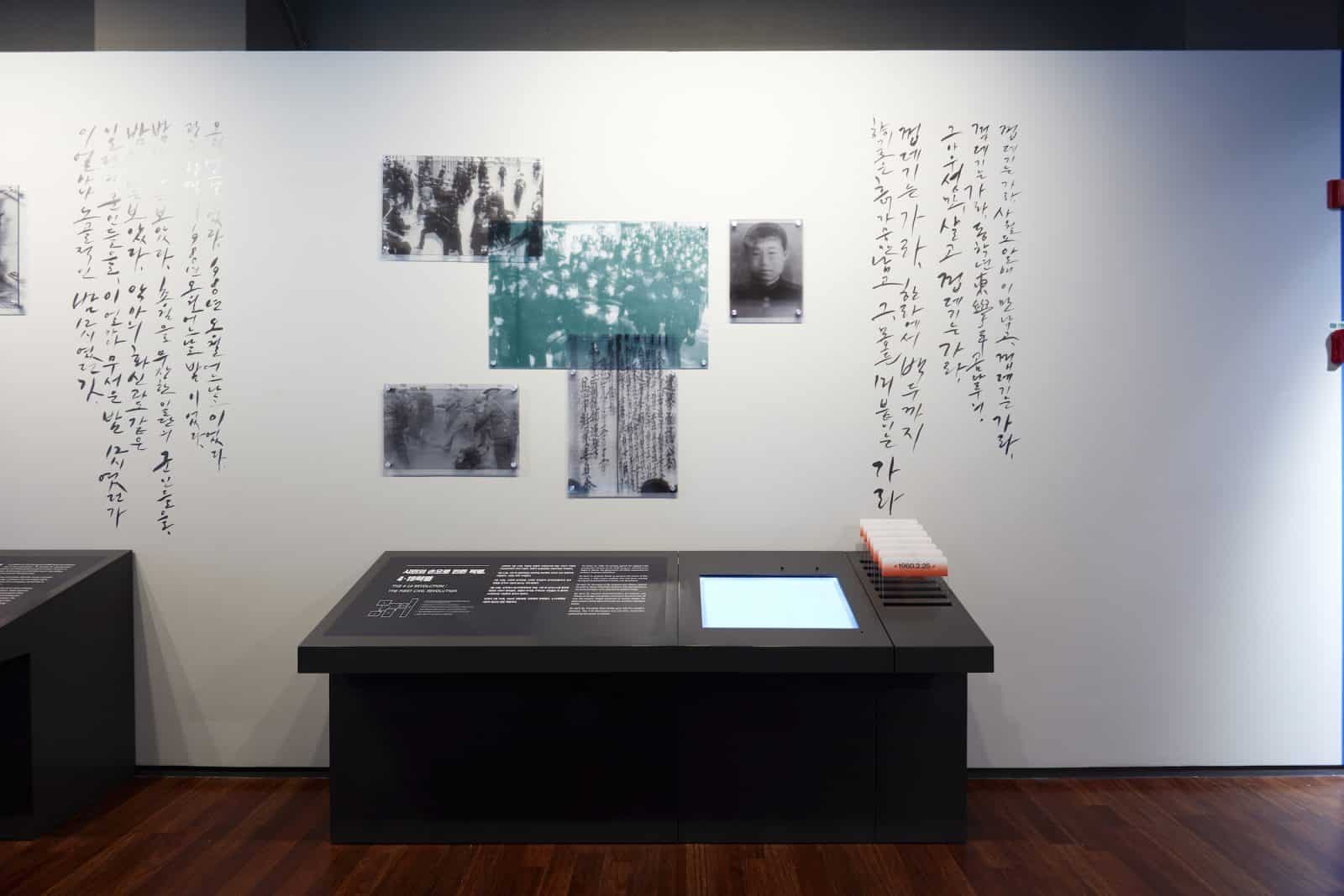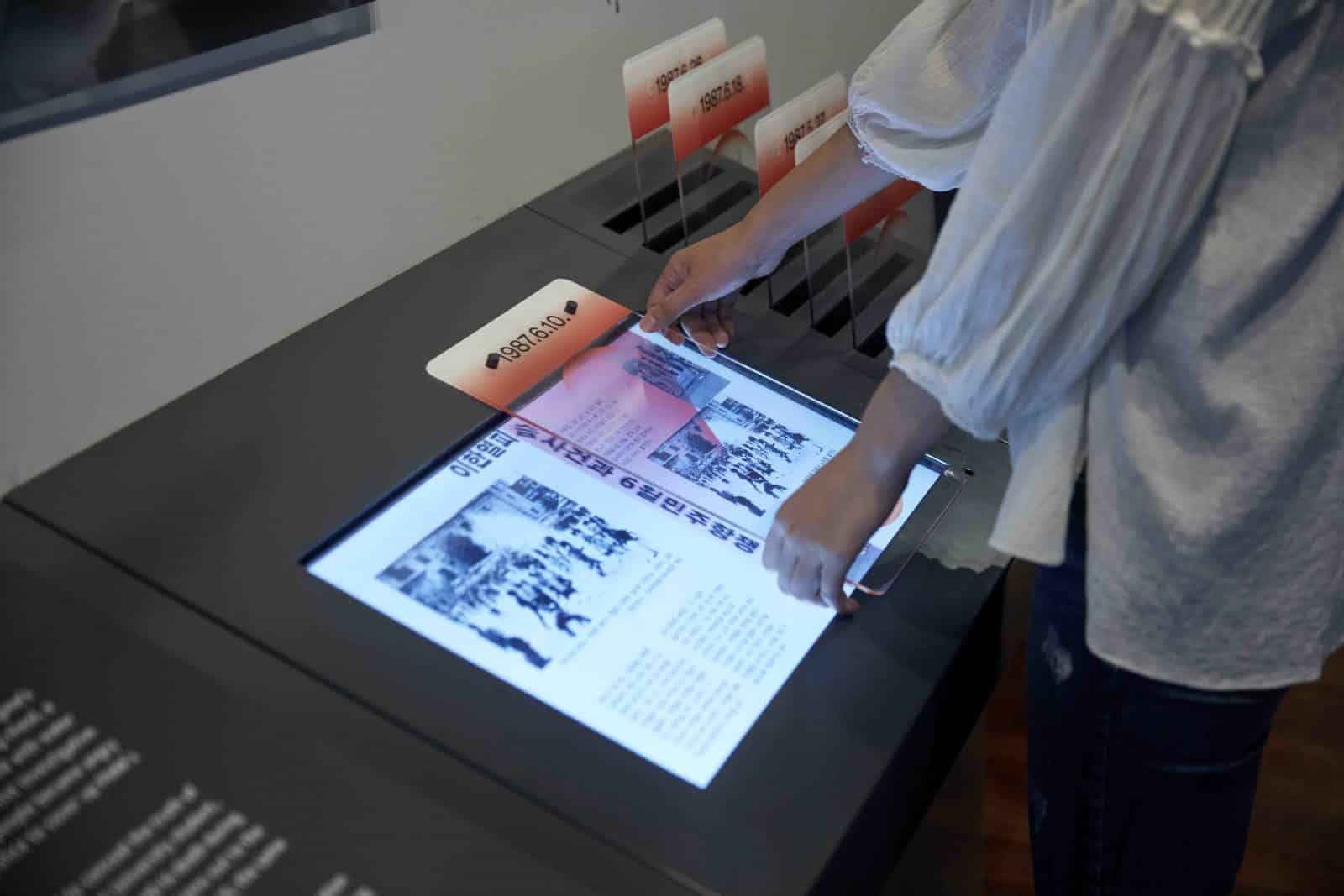- 2020
- Archive&Exhibition 아카이브&전시
- Works
- Archive&Exhibition
- AE - Exhibition
- AE - Installation
- AE - Data & Website
- Recent Works
The Democratic Life
The exhibition ⟨The Democratic Life⟩ deals with the story of democracy in my life that presents the attitude and way of life as a member of a democratic society. Through this exhibition, visitors will think and experience the democratic life and the way we create it.
The main character of this exhibition ⟨The Democratic Life⟩ is teenagers. Thus, the exhibition is organized to point out the historical context of Korean democracy and to accommodate the social issues surrounding today’s youth so that real communication on contemporary democracy can be made. For example, stories of sexual minorities, feminism, refugees and foreign workers are introduced through digital media and exhibition panels. This composition follows today’s pluralistic democracy education system in which people can share their own ideas about democracy and embrace each other’s opinion.
⟨The Democratic Life⟩ utilizes digital media such as interactive media and mobile web. Digital media go beyond recreating democracy and induces visitors’ interest in the contents. In addition, using gamification elements such as mobile quizzes, visitors can participate in one’s own and learn from them so that active hands-on education can be provided.
Digital media are placed in four locations within the exhibition. First of all, in the [Zone: You and I], projection mapping installation and digital media panel ⟨Say it⟩ installed. Visitors face the voices of various members of society here. The two media utilizes a distance sensor (installed aduino) that interacts with the viewer when she or he is standing in a particular position. Through this production, visitors will hear unexpected concerns of today’s youth and the story of activists.
In the media, ⟨You and I⟩, the voices of teenagers who are somewhat unfamiliar are produced by graphic design and projection mapping. It tells the stories of teenagers who are sexual minorities, vegetarians, and teenagers who do not attend school, and tells the cries of teenagers who were dismissed as neighbors.
⟨Say it⟩ presents the story of four activists representing feminism, overseas migrants, the disabled and workers through sign language and interview videos. Here, visitors listen to the stories of members of our society in blind spots and share opinions on discrimination, equality and fairness.
⟨We Are All⟩ deals with dignity. Visitors will appreciate domestic and foreign posters on the theme of human rights, and they will use the media to create and print human rights posters. Visitors experience the diversity and need of mature civic engagement that looks at human rights by attaching their own posters to the wall and appreciating the stories in the posters attached by others.
⟨Democracy, and⟩ is implemented as an interactive “media table to projection mapping” where a large number of visitors access, write their opinions, and send them at the same time. They leave their thoughts on the agenda left by others, or use emoticons to express their feelings. Through the media, viewers directly propose agenda items and the contents are archived, conveying the importance of active participation for a better democratic society.
Finally, the exhibition ⟨The Democratic Life⟩ induces interesting viewing through mobile activities. Visitors who access the mobile website will travel around the space within the time limit (based on GPS), solve a given quiz, and receive e-mail related information. Through these mobile activities, it serves as an activity area where the contents of the exhibition can be read outside the exhibition space, while at the same time, it is a value that should be continued to think and refine, not to end democracy by appreciating the exhibition.

 KR
KR
